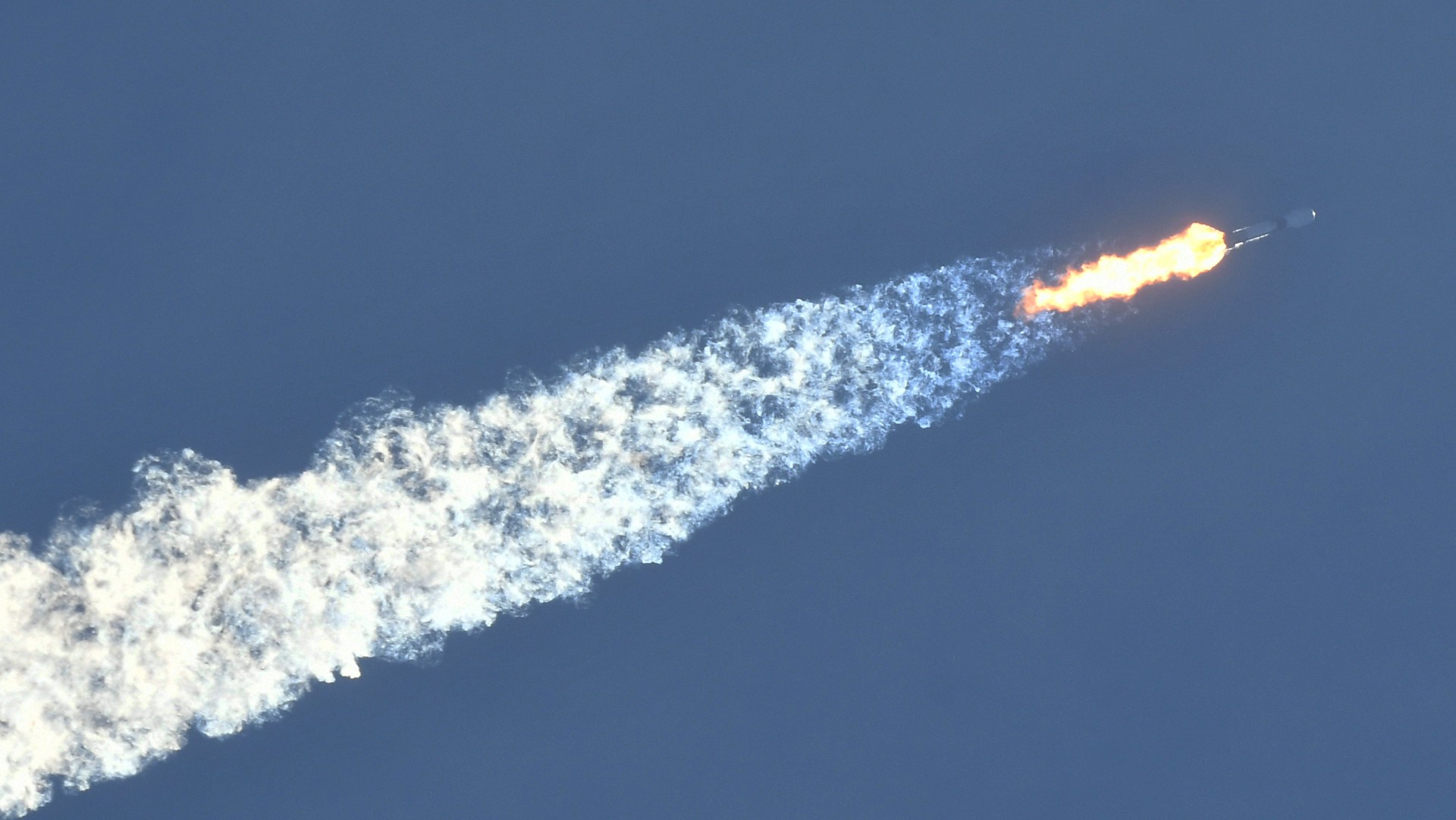How worried we should be about space debris
As part of a rocket washes up in Australia scientists warn ‘critical mass’ of orbital junk could only be decades away

A large piece of unidentified space debris has been discovered washed up on a remote beach in Western Australia.
The barnacle-encrusted object, about the size of a small car, was found about 150 miles north of Perth over the weekend. The Australian Space Agency has been liaising with its international counterparts to ascertain where it came from.
It raises questions about responsibility for monitoring and cleaning up space junk in orbit, and who is ultimately liable for damage and disposal in the rare instances they fall back down to Earth.
The Week
Escape your echo chamber. Get the facts behind the news, plus analysis from multiple perspectives.

Sign up for The Week's Free Newsletters
From our morning news briefing to a weekly Good News Newsletter, get the best of The Week delivered directly to your inbox.
From our morning news briefing to a weekly Good News Newsletter, get the best of The Week delivered directly to your inbox.
What is space debris?
Debris has been accruing in space around the Earth ever since the first rocket launches in the late 1950s. Consisting of parts of discarded rockets, spacecraft and satellites, the European Space Agency (ESA) estimates there are now 36,500 objects of space debris greater than 10cm in near-Earth orbit, along with more than 130 million smaller objects.
Most of this space junk is moving up to seven times the speed of a bullet, meaning “an object no bigger than a penny could easily destroy a spacecraft”, said BBC Science Focus.
“These objects pose more than just a hypothetical threat,” according to Space.com. From 1999 to May 2021, the International Space Station (ISS) conducted 29 debris-avoiding manoeuvres, including three in 2020 alone, said Nasa. This number continues to grow.
Even more worryingly, said Dr Alastair Gunn in Science Focus, a “critical mass” of space junk “may be only a few decades away, where one major collision results in an uncontrollable chain reaction, causing untold damage”.
A free daily email with the biggest news stories of the day – and the best features from TheWeek.com
This is known as the Kessler Syndrome, named after the former Nasa scientist Donald Kessler who laid out the idea of a orbital debris chain-reaction in a seminal 1978 paper. It featured in the 2013 Oscar-winning film “Gravity” and could make space travel impossible in the future, also disrupting our complex web of satellites so crucial to global communications.
What can be done to clean up space?
“Unfortunately,” said Space.com, “private companies and national governments have been slow to act.”
Most of the efforts focus on mitigation and avoidance of generating space junk in the first place but this does not address the huge amount of debris already there.
Waiting for the Earth’s atmosphere to drag debris into low orbit where it will burn up in the atmosphere can take decades. This has led to more radical clean-up proposals including “gathering the debris using nets, harpoons, laser beams or mini-satellites”, said Gunn.
The problem, said Space.com, is that besides the ground-based laser, all of the proposals call for launching new satellites, “thus making satellite cleanup uncomfortably expensive”.
Also, any satellite clean-up technology “automatically becomes a ‘remove an enemy’s satellite from the sky’ technology”. So any proposal “quickly moves into the murky waters of defense, international diplomacy and the militarization of space.
“For now, our best strategy is to track, monitor and warn, using a network of ground- and satellite-based observatories – and cross our fingers,” said the website.
Who is liable for space debris that falls to Earth?
While instances of space junk falling to Earth is “pretty rare”, said Australian broadcaster 9news, it does happen. The Times reported that there are villages in the remote northwest of Russia where people scavenge for space debris from a nearby launch site.
The debris provides an “unexpected resource for locals”, said the paper. But it “also poses an existential threat” in the form of a highly toxic chemical compound called unsymmetrical dimethylhydrazine – a rocket propellant – suspected of causing cancer.
Who pays for the clean-up depends on where it lands, if there is damage, and crucially, what the debris is, space lawyer and professor Melissa de Zwart told 9news.
In short, the answer is “whoever launched the object into space” in the first place, reported Al Jazeera.
“There is a United Nations Office for Outer Space Affairs, and they have an Outer Space Treaty that everyone has signed, saying that whoever launches something into space is responsible for it right until the very end,” said European Space Agency engineer Andrea Boyd.
Crucially, however, “liability under international law attaches to states, not to companies”, she said. This means that if, as seems likely, the recently discovered rocket was launched by India, it will be liable for any damage and disposal. But if it is launched by a private company, such as Elon Musk’s SpaceX, it would be the liability of the United States.
This is particularly problematic given the majority of satellites launched in recent years have been by corporations. SpaceX, for example, has already launched more than 1,700 satellites into orbit while Amazon is now aiming to assemble its own internet-satellite network.
-
 Data centers could soon be orbiting in space
Data centers could soon be orbiting in spaceUnder the radar The AI revolution is going cosmic
-
 Australia’s teen social media ban takes effect
Australia’s teen social media ban takes effectSpeed Read Kids under age 16 are now barred from platforms including YouTube, TikTok, Instagram, Facebook, Snapchat and Reddit
-
 Another Starship blast sets back Musk's Mars hopes
Another Starship blast sets back Musk's Mars hopesSpeed Read Nobody was killed in the explosion, which occurred in south Texas
-
 Test flight of orbital rocket from Europe explodes
Test flight of orbital rocket from Europe explodesSpeed Read Isar Aerospace conducted the first test flight of the Spectrum orbital rocket, which crashed after takeoff
-
 Jeff Bezos, Elon Musk and the billionaire space race
Jeff Bezos, Elon Musk and the billionaire space raceThe Explainer Tesla CEO and Amazon founder vie for dominance of satellite launch market and could influence Nasa plans to return to Moon
-
 Australia proposes social media ban before age 16
Australia proposes social media ban before age 16Speed Read Australia proposes social media ban before age 16
-
 Social media ban: will Australia's new age-based rules actually work?
Social media ban: will Australia's new age-based rules actually work?Talking Point PM Anthony Albanese's world-first proposal would bar children under 16 even if they have parental consent, but experts warn that plan would be ineffective and potentially exacerbate dangers
-
 Starliner: What went wrong?
Starliner: What went wrong?Today's Big Question Boeing spacecraft has had a 'long, difficult road'


